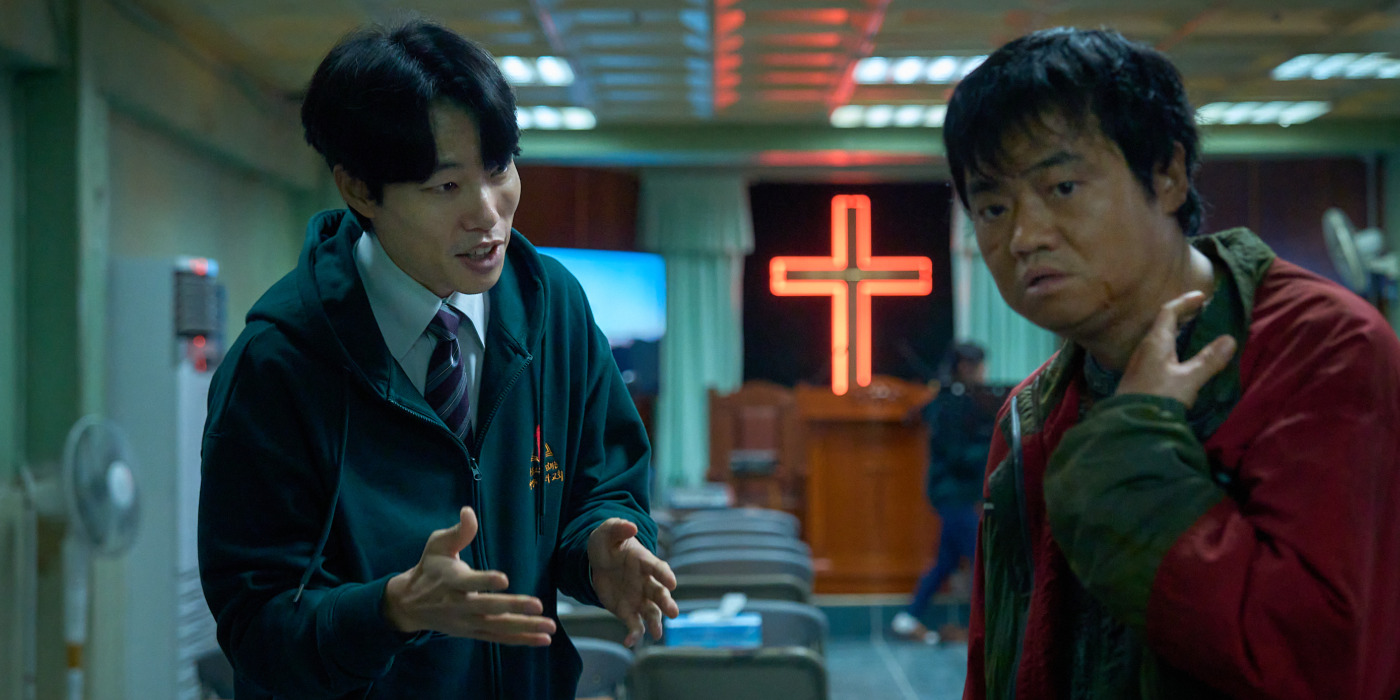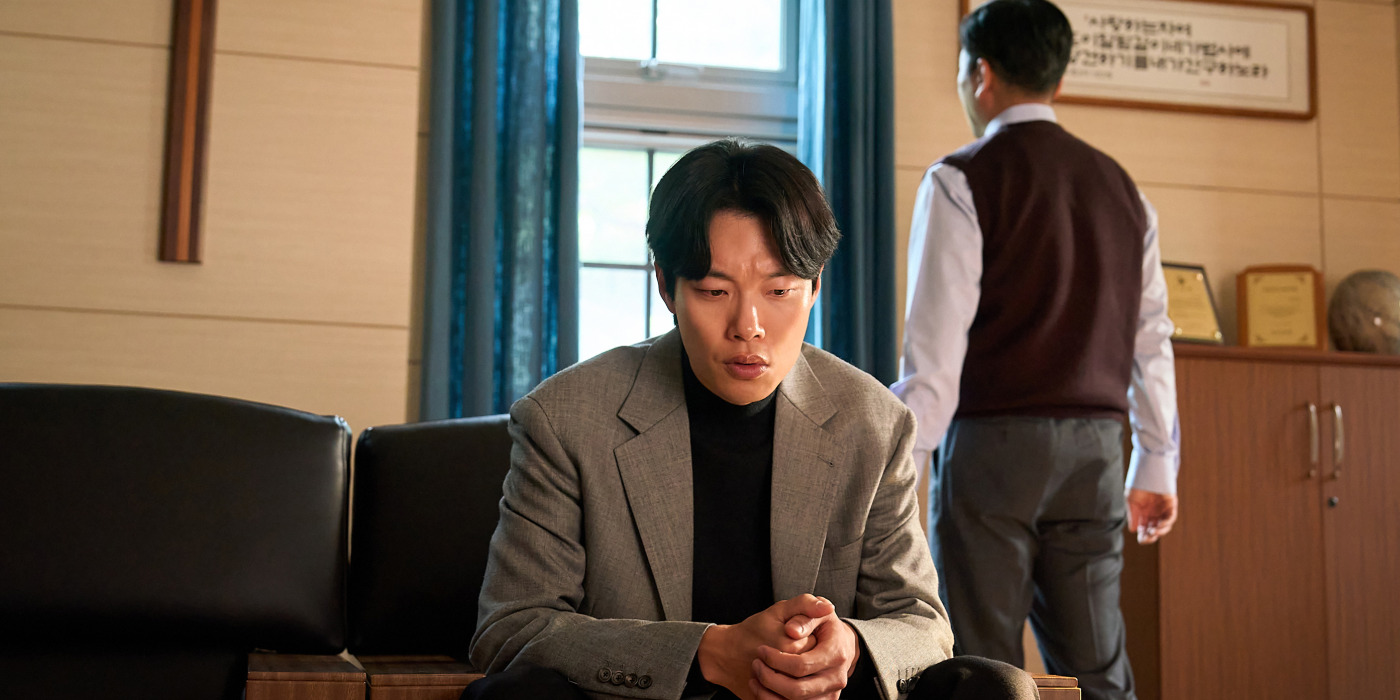Yeon Sang-ho’s ‘Revelations,’ originally known as ‘Gyesirok,’ is a Korean crime drama film that revolves around a missing person case that brings out distinct realities for two individuals. Sung Min-chan is a pastor who suspects recently released sex offender Kwon Yang-rae of abducting his young son. Shortly afterward, he begins seeing signs everywhere that compel him to think God wants him to deliver the criminal to justice in the name of divine retribution. Meanwhile, Detective Lee Yeon-hui, whose younger sister fell victim to Yang-rae, gets assigned to his case after he is suspected of abducting another young girl. However, as the ghost of her sister continues to haunt her, she remains conflicted in her pursuit of the man.
Thus, the Detective and the Pastor find themselves after the same man, plagued with otherworldly influence. Despite the horror-adjacent elements in the Netflix film ‘Revelations,’ it remains firmly grounded in reality through its intriguing exploration of faith and morality. Consequently, one can’t help but look for real-life resonance in the story’s web of religion, crime, and justice.
Revelations is Based on Choi Gyu-seok and Yeon Sang-ho’s Webcomic
Despite its criminally driven storyline, the plot of ‘Revelations’ holds no counterparts in any real-life criminal case. Instead, the film is an on-screen adaptation of Director/writer Yeon Sang-ho and his co-writer Choi Gyu-seok’s eponymous webcomic from 2022. In this project, the filmmaking duo were inspired by the real-life psychological phenomenon of Pareidolia. It’s defined as an individual’s tendency to perceive non-existent meaning in objects or patterns—usually visual—in otherwise arbitrary instances. The most recognizable example of this comes from cultural-wide perceptions of faces in nebulous places.

For instance, the 1976 image of Mars’ Cydonian region gave the impression that a human face formation was embedded on the planet’s surface. On the other hand, a more commonplace existence of this phenomenon can be felt in people’s tendency to look for shapes in the clouds. While these remain fairly innocent examples, an extreme case of this type of Apophenia can lead to psychosis. As a result, Yeon found himself intrigued by the concept and wanted to find a way to incorporate it into his work. At the time, the ‘Train to Busan’ director and his co-writer Choi were working on the Netflix show ‘Hellbound,’ which analyzes the dark side of faith and weaponized religion.
However, since Choi and Yeon could not find a way to fit this concept into the mystery thriller show, they decided to work it into another project. As such, the webcomic ‘Revelations’ was born. In the story, the writers wanted to emphasize themes of religion and faith—elements that Yeon had previously dissected in his celebrated 2013 animated film ‘The Fake.’ Pairing the same up with a thematic focus on the Pareidolia phenomenon resulted in the creation of the central characters Min-chan, Yeon-hui, and Yang-rae. Eventually, when the webcomic was adapted for the screen, the writers maintained these thematic narrative cornerstones of the story, ensuring a realistic basis for the film.
Revelations Achieves Authenticity Through Intriguing Psychological Avenues
In the narratives of characters from ‘Revelations,’ perceived faith and supernatural interference become the vessels for this pattern-recognition tendency. While developing this story into a cinematic tale, Choi and Yeon were intentional about distancing the narrative from the more fantastical nature of these elements. “Many of the live-action films I’ve worked on deal with surreal themes in fantasy worlds,” Yeon shared in a conversation with Netflix. “But this time, I ruled out fantasy elements as much as possible. I wanted to depict psychological elements that can be found in reality, such as illusions, delusions, and traumas.”

As a result, the three central characters all undertake different psychological roads as they’re afflicted by a similar worldview. Yang-rae, the criminal, is plagued by his own abusive past, which triggers him to recreate his pain in others. Yeon-hui is haunted by the grief over her sister’s death, which pushes her into a perpetual proclivity for self-blame and guilt. Meanwhile, Min-chan—who most prominently experiences severe Apophenia—sees divine visions and delusions to legitimize his criminal actions. The interconnected baselines of the three characters create a cohesive narrative that becomes easier to resonate with and relate to.
Furthermore, subtle but significant connections to reality also contribute to the story’s sense of realism. For instance, the film’s focus on criminal sex offenders and their place in society remains reminiscent of reality. As per an analysis from the Korea Institute of Criminology and Justice, 52.3% of child sex offenders received probation in 2021. As such, Yang-rae’s instrumental storyline and the discussions around his criminality hold inherent roots in reality. Similarly, Yeon-hui’s grief and Min-chan’s moral quandary also infuse the film with universally resonant emotions and experiences. Ultimately, these aspects ensure ‘Revelations’ retains an authentic connection to reality despite direct inspirations from real-life events and people.
Read More: Revelations Ending, Explained


